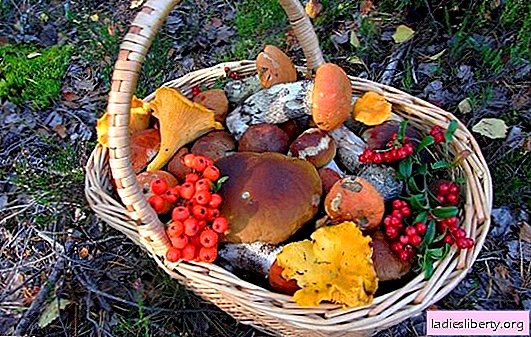
The popularity of castor oil plants is increasing every year. Outwardly, it looks like an exotic palm tree. This is a strong plant with large leaves that look like maple foliage. Now it can be found in almost every yard, where they are used for hedges or for decorating flower beds.
In our country, castor bean has several names, the most popular are “castor oil”, “paradise tree” and “Turkish hemp”. This culture develops very quickly, the leaves of the plant 7 or 9 radiation, resemble a maple leaf. Most often it is grown in an annual culture, castor oil is isolated from the seeds.
Attention! Homemade castor oil is poison. To remove toxic components, the original liquid requires special treatment in an industrial environment. Do not try to use the product squeezed out of castor oil seeds - this killed many people.
Now this plant is used as a decorative culture. Thanks to the variety of species bred by breeders, each gardener will choose a suitable "palm" for himself. Castor oil plant forms inflorescences in late summer. Under optimal external conditions, the development of some species is very rapid, individual specimens grow up to 10 meters.
Castor Oil Plant: Planting Seedlings
This is one of the crops that is grown mainly at home at home, it is very unpretentious. Only you need to carefully choose a place for its planting - the soil should be constantly moist, nutritious and loose. It will grow best on chernozem, but will have to create a good drainage layer for it.
Castor bean loves the sun's rays and is thermophilic - in small frosts, the plant dies, does not like gusts of wind and drafts. Seeds are sold in many stores, you can collect them from plants growing nearby.

It is better to grow it in the seedling method - this will make it possible to get stronger and rise in time and castor-bearing bushes from seedlings will not suffer from late frosts. To get seedlings in a timely manner, the seeds are sown no earlier than the second decade of March and before the start of summer. Transplanted seedlings on flower beds in May.
Growing seedlings
Plants of this culture develop rapidly and, having sown seeds in March, you can not be afraid that the bushes will not have time to form seeds before the first frosts. Although some owners claim that it is better to sow castor oil in April.
Every seed is needed, planted in your own pot. It is not necessary to put 2-3 seeds in one container, very soon the seedlings will become crowded. Seeds 24 hours before sowing must be soaked in warm water, while they are saturated with moisture, you need to change the water several times.
You can not immerse seeds in the soil deeper than 6 cm, after sowing the pots are covered with gauze and transferred to a warm place. If the sticky peel does not fly off the cotyledons, it must be removed with tweezers, otherwise this can cause decay of the leaves and sprout. Do not forget - the sun's rays are life-giving for castor oil. Watering seedlings begin after the appearance of the first key.

First, a seedling appears and stretches above the ground, after which the first leaf is formed, during this period the pots must be placed in a well-lit cool place where the temperature is maintained at about 15 degrees. As the seedlings grow, they add soil to the pots until they are full. Too fast seedling growth will require transplanting seedlings into larger pots. Sometimes by the time of transplantation to the flowerbed, the height of the seedlings can reach 1 meter.
Transplanting
When the risk of freezing frost disappears and the nights become warm, they begin to plant castor oil plant on the flower beds. Young plants are very tender, you need to work with them as carefully as possible. In addition, it is important not to damage the root system of the seedlings, otherwise they will die. For this reason, before starting work, they are well watered, so an earthen clod with roots will not fall apart. You can even cut the pots and then plant the plants. Not very deep holes are prepared for plants - so that the root is filled up to the bottom leaf.
Castor oil plant: sowing seeds into the ground
You can not fool your head with seedlings, and plant castor oil seeds. Only for this you need to choose the time when the air temperature does not fall below 12 degrees. Seeds need to facilitate the "path to life", they have an oil, dense film that is difficult to break through to the sprouts. They need to be processed in advance with sandpaper, so the sprouts will appear sooner (this is called scarification) - in three weeks you will notice the first keys. In each well, you can put 3 seeds of castor oil.
Castor Oil: Care
In nature, no one cares for castor oil, but in our climate she needs care. Timely, complete and high-quality care is a guarantee of a healthy and beautiful plant.
Castor oil plant loves watering, it is very important in any period of plant growth. It must be regularly watered every 5 days, pouring 10 liters of water into the bush. This culture develops throughout the growing season - it spends the summer on a set of vegetative mass, the formation of peduncles and seed growth. For this reason, it is advisable to feed her regularly.
• Before flowering, solutions containing nitrogen fertilizers are poured under the bush or manure is added;
• After the inflorescences are formed, plants need to be fed with phosphorus-potassium compounds.
Do not forget that for young castor oil, it is necessary to provide supports.
Take into account! The seeds of this beautiful plant contain poison! 6 seeds of a plant a lethal dose for a child!
Do not allow children to play near plants, take them in their mouths or tear leaves. Oilcake castor oil is also very poisonous, although this is an excellent fertilizer that additionally repels many pests.
Pests and diseases
Castor oil plant resists pests and diseases, but it also has its troubles. Young plants can be damaged - sand lark, caterpillars of a meadow moth and winter scoops, false stalks and wireworms. This is another reason to spend time preparing strong seedlings. During the formation of inflorescences and flowering, meadow bugs can gnaw them. You can destroy them simply - until they multiply, you can collect the pest manually, if there are a lot of them, treat the bushes with a decoction of wormwood - 1/3 of the chopped grass, insist for three days in a bucket of water. After this, strain the solution and spray the plants.
If garlic, onions, coriander, mint, dill or parsley grow near the castor-bushes, then few pests will crawl onto your "palm". It is better to deal with the false stranger and wireworm in advance, so it is easier to destroy it. When planting plants in the ground, it is necessary to shed prepared holes with potassium permanganate.
Plants sometimes get sick - powdery mildew, late blight, phyllosticosis, cercosporosis, bacteriosis, various rot. Bushes can become infected with fungal diseases, only treatment with Bordeaux liquid or similarly active compounds can save them.











